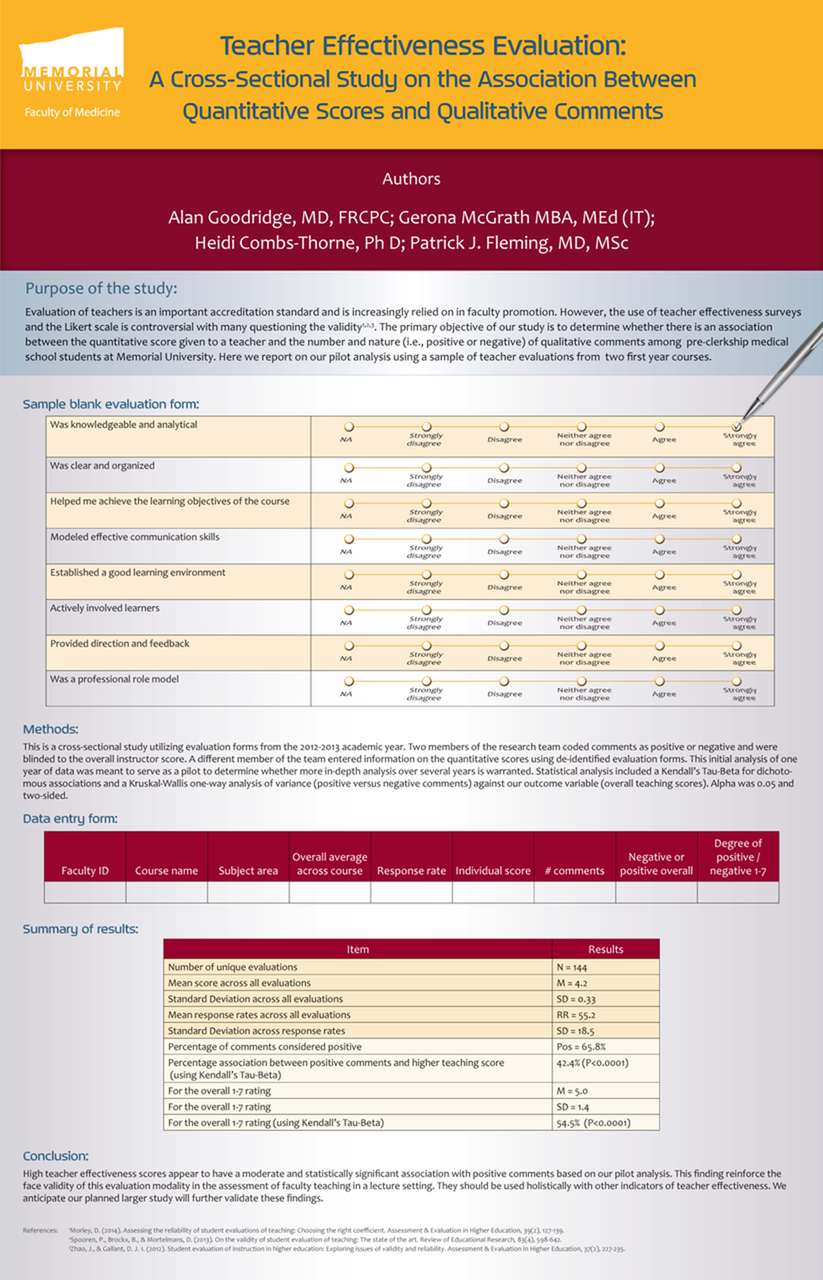Abstract
Purpose: Teacher effectiveness evaluation includes the systematic collection and interpretation of data on faculty and it is critically imperative for quality improvement within both undergraduate and postgraduate medical education. Evaluation of teachers is an important accreditation standard and is increasingly relied on in faculty promotion. However, the use of teacher effectiveness surveys and the Likert scale is controversial with many questioning the validity. The primary objective of our study is to determine the association of teacher effectiveness scores with either positive or negative comments among pre-clerkship medical students at Memorial University of Newfoundland. Here we report on our pilot analysis examining a sample of teacher evaluations in the Basic Science of Medicine and Integrated Study of Disease I courses.
Methods: This is a cross-sectional study utilizing learner evaluations of teachers in the pre-clerkship program at Memorial University for the 2012-2013 academic year. Two members of the research team coded comments as positive or negative and were blinded to the overall instructor score. This initial analysis of one year’s worth of data was meant to serve as a pilot to determine whether more in-depth analysis over a longer period of years is warranted. Statistical analysis included a Kendall’s Tau-Beta for dichotomous associations and a Kruskal–Wallis one-way analysis of variance (positive vs. negative comments) against our outcome variable (overall teaching score). Alpha was 0.05 and two-sided.
Results: N=114 unique evaluations were identified in our pilot analysis with a mean faculty score = 4.2 (standard deviation: 0.33). and a mean response rate = 55.2 (SD: 18.5). 65.8% of comments were considered positive. Using Kendall’s Tau-Beta, there was a 42.4% association between positive comments and increased teaching score (P<0.0001).
Conclusion: High teacher effectiveness scores appear to have a moderate and statistically significant association with positive comments based on our pilot analysis. This finding reinforces the face validity of this evaluation modality in the assessment of faculty teaching in a lecture setting. They should be used holistically with other indicators of teacher effectiveness. We anticipate our planned larger study will further validate these findings.






